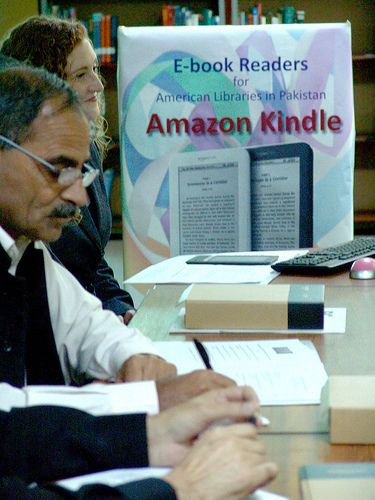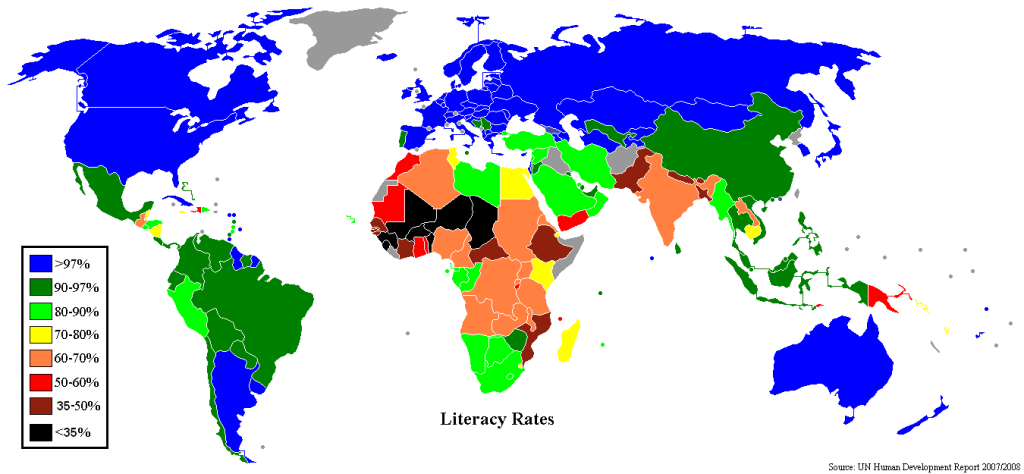
I recently had the opportunity to watch a presentation by the State Department. Making the presentation was an intense, broad-shouldered diplomat. He talked about his recent posting in Pakistan and the department’s attempts to improve America’s image in a country where it’s less popular than Osama bin Laden. He showed pictures of events he’d held, full of smiling Americans and Pakistanis. The pictures were similar to the one above.
I couldn’t help but notice one thing. In all these events the only language that appeared was English. There would be a presentation of awards given by the American government, for instance. On the background there would be a seal of the American government and signs like “furthering our partnership with Pakistan” or “a gift from the United States.” In English.
More below.
